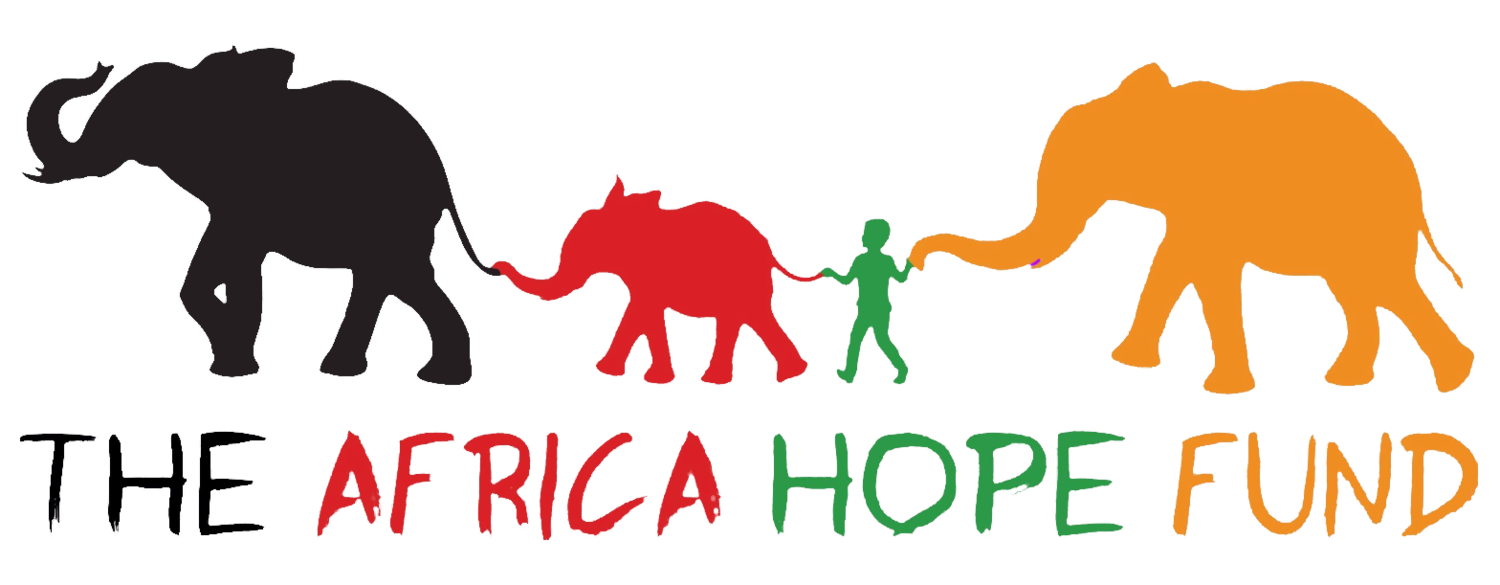Conservation Rescues Snared Bull Elephant
Conservation South Luangwa Rescues Snared Bull Elephant
When we were in Zambia in May 2014, Africa Hope Fund CEO, Carol Van Bruggen learned that a young bull elephant had a snare around his neck, and the CSL team was on their way to dart him to remove the snare and treat his wounds. The elephant stood on the far side of a small pond in an otherwise dry and open area. He looked thin and tired, with his head down, dejected.
We could see the heavy thick cable around his neck. Yards of cable trailed behind him. The elephant’s enormous ear was caught underneath the cable and had a long slash more than a foot long where the cable had worked its way through the flesh. This elephant probably pulled the cable away from the trees that anchored it and dragged more than fifteen feet of it alongside him for about a year, snagging it on other trees, rocks, and bushes, digging the cable more deeply into his flesh.
After Dr. Sichande darted the elephant with tranquilizers, and he slowly crumpled to the ground, one of the scouts said it was safe to come up to where they were working. At first, I thought the wound was too deep and large, exposing too much neck tissue. The tranquilizer paralyzed the elephant; he could see what was going on, and he could hear, but he could not move. The rescue crew doused the elephant with buckets of water to keep him cool and worked the cable free with great difficulty. They went to work treating the wound, delivering antiseptic into the deep gash that surrounded his neck and pouring buckets of antiseptics onto his neck and ear. The meds were a vivid blue color, which made it easy to see they were getting it to the bottom of the deep wound. Dr. Sichande injected the young elephant with several enormous syringes of antibiotics to help him heal.
While he looked large to us, the young bull elephant had a lot more growing to do. Male elephants can grow to eleven feet in height and weigh up to 13,000 pounds. As his rescuers worked, we were free to come as close to the elephant as we wanted. It’s rare to have a chance to get this close safely. I picked up the elephant’s trunk to listen to his breathing, fascinated by the tip with its finger-like tactile digits capable of picking up the smallest item. The skin on his trunk felt tough but softer than I expected. Wiry hairs dotted his body, and he had long, long eyelashes. His enormous feet were so ungainly, yet perfectly made for what elephants do. I knew the slash in his ear would identify him forever as the elephant rescued from a snare, but he was free again to eat and move freely.
It was a beautiful day, not yet very hot, as we walked around the lagoon and back to our safe vehicles. This lucky elephant would survive his hapless wandering into a snare set meant for a smaller animal; maybe impala poachers hoped to sell as bushmeat. He would likely mature to breeding age, and within a few years come into musth and find his true love. Today was just another day in the life of Conservation South Luangwa’s work, but because people like our readers help support this program, elephants and other wildlife have a chance to live a free and natural life.
Written by Patricia Cole
An Africa Hope Fund board member for 7 years, Pat is a writer and a conservation activist. After traveling to Zambia, she became dedicated to helping Africa Hope Fund provide education to the next generation of Africans and ensure their future by protecting wildlife. Find Patricia on Facebook and Twitter, or on her websites www.writepatwrite.com and www.patmcole.com.
Enjoy reading this Elephant Blog post? Help support our future posts by becoming a Patreon supporter!

